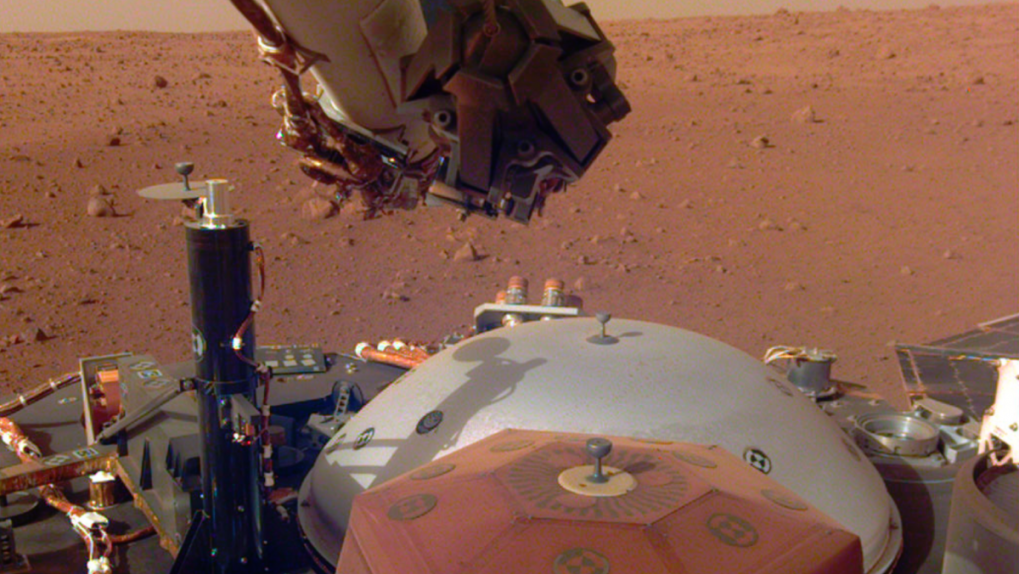NASA’s Mars rovers have provided breathtaking images from the surface of Mars for many years, but listening to Mars is a whole other story. The InSight lander, which touched down on Mars in late 2018, is designed to listen closely to the inner workings of the planet, and it may have just nailed a huge milestone.
In a new blog post, NASA reveals what appears to be a recording of audio from the first Marsquake observed by the lander. It’s a small step in a long road ahead for InSight, but it’s an exciting development in a mission that has seen more than its fair share of trouble.
You’ll remember that back in March, NASA was faced with a huge hurdle to overcome when the InSight’s drilling tool failed to drill deep enough into the Martian surface. The instrument came up well short of the intended depth to be drilled, but the robot has additional observational tools at its disposal as well.
In the video below you’ll hear the high-pitched whine of, well, something going on near the InSight. Scientists believe it to be evidence of the first Marsquake observed by mankind, but they’re still digging into the data in order to confirm that notion.
“InSight’s first readings carry on the science that began with NASA’s Apollo missions,” InSight Principal Investigator Bruce Banerdt said in a statement. “We’ve been collecting background noise up until now, but this first event officially kicks off a new field: Martian seismology!”
The rumblings were detected by the InSight lander’s SEIS (Seismic Experiment for Interior Structure) instrument, which the robot placed on the planet’s surface last year. InSight is currently less than six months into its two-year primary mission, so we can expect to see many additional discoveries in the coming months.








